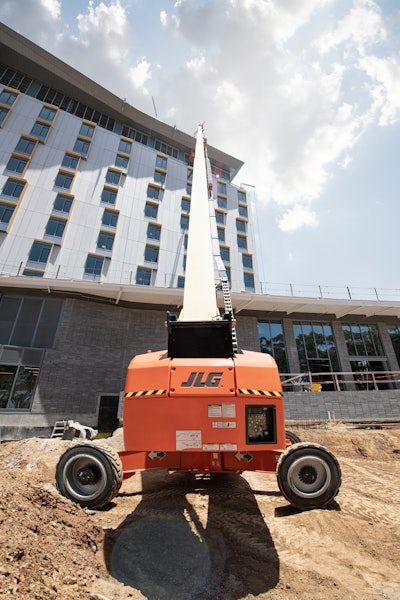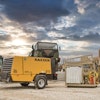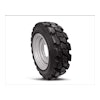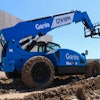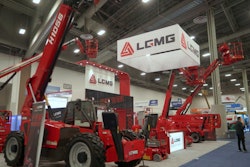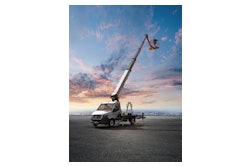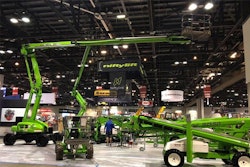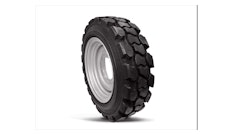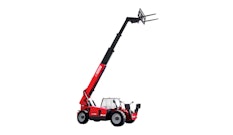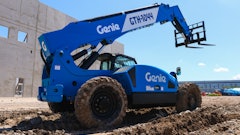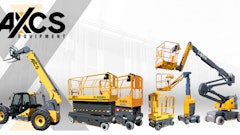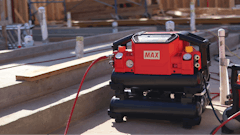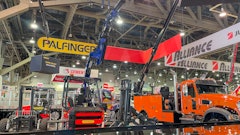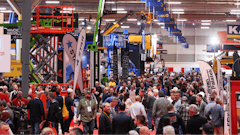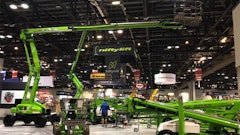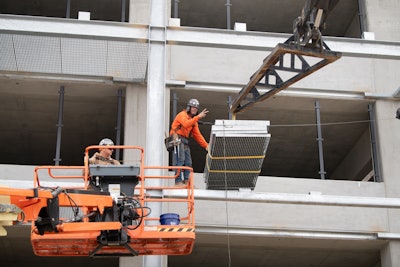
Every year, JLG customers provide insights into how the latest product launches and current market trends affect the access equipment industry. We are also examining where our customers want to take that technology and where our products are so we’re ready to go.
Although most of these are not new, there are some trends in what customers are requesting in MEWPs.
1. Higher CapacitiesCustomers seek MEWPs that can lift heavier loads. This trend is driven by the need to increase productivity by moving more materials or supporting more workers on a single platform. Higher capacity MEWPs allow for fewer trips and more efficient use of time and resources on job sites.
2. Compact Sizes
There's a growing demand for smaller, more maneuverable MEWPs operating in confined spaces. This is particularly important in urban construction, renovation projects and industrial settings where space is at a premium. Compact MEWPs offer greater accessibility and versatility in tight work areas.
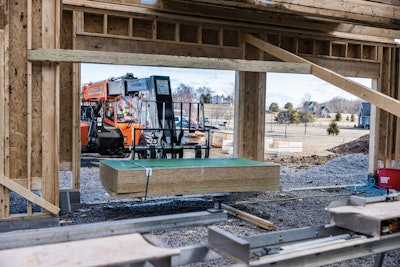 JLG Industries
JLG Industries
3. Versatility
Multi-purpose MEWPs are becoming increasingly popular. Customers prefer machines that can perform various tasks, reducing the need for multiple specialized equipment. This versatility can lead to cost savings, improved efficiency, and simplified fleet management.
4. Environmentally-friendly Operation
With growing environmental concerns and stricter regulations, there's a shift towards MEWPs with low or zero emissions, reduced noise levels and minimal fluid leakage. These eco-friendly features allow operation in sensitive areas like hospitals, schools and indoor spaces, as well as in jurisdictions with strict environmental regulations.
The demand for and acceptance of electric and hybrid aerial machines are on the rise, and we expect this trend to continue. Here are four key factors contributing to this growth:
- Increased model variety: We’re seeing a broader range of electric and hybrid aerial machines become available. These new models offer longer runtimes and quicker charging capabilities, which address some of the previous limitations and make them more practical for various applications.
- Expansion of bi-energy options: The availability of hybrid and/or bi-energy options is also growing. These machines combine electric power with traditional fuel sources, offering greater flexibility and extending operational hours while still benefiting from the reduced emissions and lower operating costs of electric power.
- Falling costs for advanced battery technologies: The costs of advanced battery technologies, such as lithium-ion batteries, are decreasing. This reduction in cost makes electric and hybrid machines more financially accessible for both rental companies and end-users, further driving adoption.
- Growing charging infrastructure: The charging infrastructure is improving, with more portable solutions available to bring power directly to job sites. This advancement alleviates one of the most significant challenges associated with electric machines and supports increased use in the field.
 JLG Industries
JLG Industries
Given these advancements, we expect that the market for electric and hybrid aerial machines will continue to grow, especially in the rental sector. We also anticipate that rental companies will likely experience greater demand for these eco-friendly and cost-effective solutions as these machines continue to become more efficient and economically viable.
5. Connectivity
MEWPs are increasingly being integrated into the broader construction ecosystem through IoT (Internet of Things) technologies. This connectivity enables real-time monitoring of machine performance, predictive maintenance, fleet management and data-driven decision-making. It can also enhance safety by providing remote diagnostics and operation oversight.
6. Autonomous Operation
There's growing interest in MEWPs with autonomous or semi-autonomous capabilities, particularly for tasks involving heavy, repetitive motion or work in varying conditions. These features can enhance safety by reducing human error, address labor shortages by allowing one operator to manage multiple machines and increase efficiency by optimizing movement and positioning.
A major focus has been on integrating advanced technology to improve safety and efficiency. Autonomous functions can range from simple self-leveling to complex navigation and task execution. For example, one of our focuses in access equipment is to reduce the need for operators to be physically involved in high-risk tasks by leveraging robotics and autonomy. This shift makes strenuous work less taxing and significantly enhances safety by minimizing direct exposure to hazards.
Overall, integrating these advanced technologies will not only make current construction tasks more efficient but also have the potential to attract a more diverse workforce by making the industry more accessible and less physically demanding. These trends collectively point towards a future of MEWPs that are more capable, efficient, safe and sustainable while also being better integrated with modern construction management practices.

